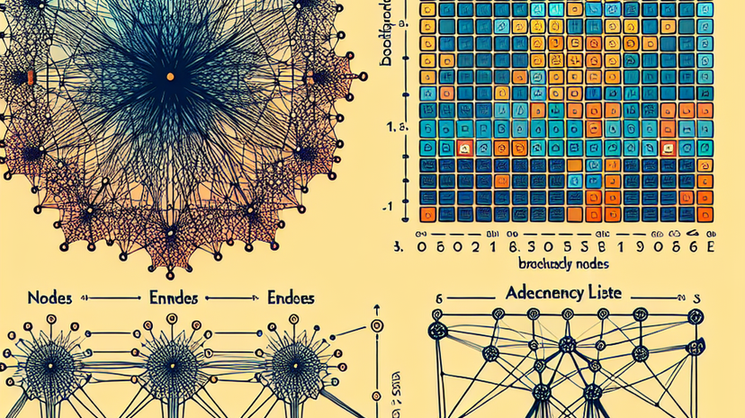Optimizing the performance of Breadth-First Search (BFS) and Depth-First Search (DFS) algorithms relies heavily on selecting an appropriate graph representation. The choice between using adjacency matrices or adjacency lists greatly affects the efficiency of these graph traversal methods. This article explores the trade-offs of each representation and provides guidance for making informed decisions to maximize the outcomes of BFS and DFS.
BFS and DFS are crucial graph traversal algorithms, each with unique strengths. BFS explores all vertices at the same level before moving to the next level, making it useful for finding the shortest path between two vertices. DFS, on the other hand, explores each branch as far as possible before backtracking, making it ideal for tasks like identifying connected components or detecting cycles in a graph.
The choice between adjacency matrices and adjacency lists significantly impacts the performance of both BFS and DFS. An adjacency matrix is a 2D array representing vertex connections, while an adjacency list is a collection of linked lists representing these connections.
Adjacency matrices offer the advantage of constant time complexity for checking vertex connections. This makes them preferred for dense graphs, where most vertices are connected. However, this advantage comes with increased memory usage. Adjacency matrices require space for every possible edge, making them memory-intensive, especially for large graphs. Additionally, performing BFS using adjacency matrices can be slower as it requires iterating over all vertices, even if there are no connections.
In contrast, adjacency lists have a smaller memory footprint as they only require space for actual connections. This makes them more suitable for sparse graphs, where only a few vertices are connected. Using an adjacency matrix can optimize BFS performance by allowing direct access to a vertex’s neighbors. Conversely, utilizing an adjacency list enhances DFS efficiency by enabling efficient backtracking and exploration of neighboring vertices.
Other factors, like memory usage and processing power, also influence the efficiency of BFS and DFS algorithms. In scenarios with limited memory, adjacency lists may be preferred due to their smaller memory requirements. Conversely, if processing power is a constraint, adjacency matrices may be a better option as they provide constant time complexity for checking connections.
Choosing the appropriate graph representation depends on the specific application requirements. For dense graphs where memory is not a concern, an adjacency matrix is suitable. However, for sparse graphs where memory efficiency is crucial, an adjacency list is more appropriate.
It’s important to note that there are specific graph types where BFS performs better with an adjacency matrix. In complete graphs, where every vertex is connected to every other vertex, the constant time complexity of adjacency matrices for checking connections outweighs the memory overhead.
By carefully considering graph representation choices, developers can address the challenges in implementing BFS and DFS. Expert recommendations can guide the selection of the most suitable graph representation for optimal BFS and DFS outcomes. Moreover, future trends in graph representation may impact the performance of these algorithms. Hybrid approaches that combine features of both adjacency matrices and adjacency lists can offer a balanced solution for efficient BFS and DFS.
In conclusion, the choice of graph representation has tangible consequences for the performance of BFS and DFS in different applications. Whether it’s the advantages of adjacency matrices in dense graphs or the memory efficiency of adjacency lists in sparse graphs, understanding the trade-offs and making informed decisions significantly optimizes the outcomes of BFS and DFS algorithms. By carefully selecting the most suitable graph representation and considering factors like graph density and traversal requirements, developers can ensure optimal performance and achieve efficient graph traversal.











